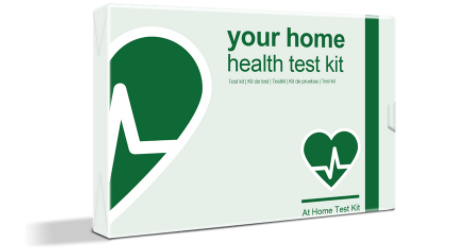Having a wheat intolerance can affect the way you live your life on a daily basis as well as long-term in your diet planning. Test Your Intolerance is devoted to helping those who are living with a wheat intolerance and many other intolerances, as we look to identify, discover and learn how food impacts the way we live. By taking one of our highly-regarded and carefully refined intolerance tests, our customers have been able to plan for the future, putting aside any fears they previously had, as they embark on their new wheat-free diet. If you’re interested in being one of those comfortable and satisfied customers too, take a moment to learn about wheat intolerance and what it could mean for your body.
What is wheat intolerance?
Just like any other intolerance you might know about, wheat intolerance is when your body is unable to digest wheat products effectively, creating symptoms such as bloating, stomach pain and general discomfort. Recently, more and more people are coming forward with wheat intolerances and it has led specialists to try to determine why this is. It’s thought that the use of new and highly refined cereals (all of which are wheat-based) is the cause of the increase, though there are other factors to consider as well [1]. Since humans, evolutionarily speaking, weren’t used to eating rich and pure wheat-packed foods first thing in the morning, their body wasn’t able to digest the foods properly and this led to the development of a wheat intolerance.
Another suspected common factor is overindulgence or an overexposure to that particular food item, and, due to the way technology has evolved, foods are now made with additive ingredients that we would have never thought of before. With this development comes new diagnoses.
It’s important remember that wheat intolerance, or wheat sensitivity, is different from coeliac disease, which is when the stomach lining is damaged from eating gluten-containing products. Both conditions often present the same way (leading to a lot unclear diagnoses), but are unique conditions that will impact the body differently [2].
How a food intolerance test is helpful
When taking an intolerance test, our customers are able to figure out exactly what foods they are intolerant to (including some that may surprise them!) and what foods are okay for them to eat as normal. The thing is, a lot of intolerances are self-diagnosed or they are missed entirely, which can lead to problems down the road in terms of nutrition and general well-being. In fact, studies show that even though online self-diagnosis is popular, the consumer and educated, personalized service focus is missing from this kind of diagnosis [3]. Even though everyone else” is doing it, it’s still important to get a formal intolerance test and get the confirmed, authentic results to know for sure.
Alternative foods when living with a wheat intolerance
 Remember, even though you may have a diagnosed wheat intolerance, those who are following a wheat-free diet due can still eat rice, oats, corn, rye and barley. Cutting bread out may be a hard task for some, but all supermarkets offer a wheat-free alternative, meaning that slice of toast in the morning can still be way you start your day. It’s all about finding your way to better alternatives.
Remember, even though you may have a diagnosed wheat intolerance, those who are following a wheat-free diet due can still eat rice, oats, corn, rye and barley. Cutting bread out may be a hard task for some, but all supermarkets offer a wheat-free alternative, meaning that slice of toast in the morning can still be way you start your day. It’s all about finding your way to better alternatives.
All around the world, but particularly in New Zealand, there are many alternatives to products which contain wheat so that you can adapt to an elimination diet easier than you might think. A wheat-free diet could be exactly what you need to embark on your healthier lifestyle. You may think that having a wheat intolerance could be the end of the world, but you can still enjoy an exciting diet with delicious meals that will show you very quickly that you now have access to all sorts of great tastes you otherwise may not have explored.
If you suspect that you have a wheat intolerance, then you can learn exactly what might be causing you pain by taking an intolerance test to help you know for sure. Learning what your intolerances are can lead you to live and enjoy the brighter future you have always wanted, and you’ll also get to enjoy some quality food while you’re at it. There’s no reason that you need to suffer in silence, especially when the test is so easily taken right from your home.
If you think you might have a food intolerance and want some more information, please contact the team at www.testyourintolerance.co.nz who are available for you 24 hours a day, 5 days a week to give you the information that you need. Getting that peace of mind on how the test works, and why it’s beneficial, might be just what you need to show you it’s the right call for you.
References:
[1] de Lorgeril, M. and Salen, P., 2014. Gluten and wheat intolerance today: are modern wheat strains involved?. International journal of food sciences and nutrition, 65(5), pp.577-581. Available at: https://www.tandfonline.com/doi/abs/10.3109/09637486.2014.886185
[2] Potter, M.D., Walker, M.M., Jones, M.P., Koloski, N.A., Keely, S. and Talley, N.J., 2018. Wheat intolerance and chronic gastrointestinal symptoms in an Australian population-based study: association between wheat sensitivity, celiac disease and functional gastrointestinal disorders. American Journal of Gastroenterology, 113(8), pp.1036-1044. Available at: https://journals.lww.com/ajg/Abstract/2018/07000/Wheat_Intolerance_and_Chronic_Gastrointestinal.21.aspx
[3] Robertson, N., Polonsky, M. and McQuilken, L., 2014. Are my symptoms serious Dr Google? A resource-based typology of value co-destruction in online self-diagnosis. Australasian Marketing Journal (AMJ), 22(3), pp.246-256. Available at: https://www.sciencedirect.com/science/article/abs/pii/S1441358214000469

